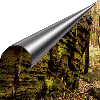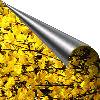

 | Magurski National Park |  |




 | Magurski National Park |  |


The Magurski National Park was established on January 1, 1995. Its total area is 19,962 ha, with 87 % being covered with forests, mountain arable fields of old Beskid villages, meadows and pastures. There are over 70 km of marked tourist trails in the Park, making the area easily accessible to visitors.
The symbol of the Park is the lesser spotted eagle (Aquilla pomarina); its population in Low Beskid is higher than that of any other region of the Polish Carpathians.
Natural values
The Park includes the highest and central parts of the Low Beskid Mountain Range. This range belongs to the Central Beskid and declines north towards the Ciezkowickie Plateau and Jaslo-Krosno Basin. Low Beskid is a physiographic subregion between Western and Eastern Beskid, with rather poor flora in which the deciduous trees are a natural component of the forests. Earlier, these areas were loosely protected in the Magurski Landscape Park and the Landscape Park of Zrodla Jasiolki in the Low Beskid region.
In the Park there are well-heads of important rivers - the Wisloka River, a tributary of the Wisla (Vistula) River; in the west, the Park is limited by Tylicka Pas and the Kamienica Nawojowska River, a tributary of the Dunajec River, and in the east it reaches Lupkowska Pass and the Oslawa Valley, a tributary of the San River. The most important mountain in the territory of the Park is Lackowa - 997 m above sea level, Magura Watkowska - 846 m above sea level, and Marewka - 795 m above sea level.
An interesting natural feature is protected in the strict reserve "Kornuty". Here, crags of the sandstone, which are exposed on the slopes of Magura Watkowska Mountain (864 m above sea level), and unusual stand of dwarf mountain pine of the secondary succession may be found.
Vegetation
Typical elements of the Park's flora are forest complexes, covering mountain slopes and ravines. The forests are divided into two climatological-vegetational zones according to the elevation:
There are 30 characteristic plant communities, including about 350 species of vascular plants, 45 typical mountain species and, overall, 41 protected species. Although the flora of the Low Beskid is regarded as poor, it is possible to find some curiosities belonging to the group of stenothermal species.
- The first one is the plateau zone, covering almost half of the Park area, at the elevations up to the range of 530-550 m above sea level. It is covered with birch-fir-Carpathian and swamp alder forests, fir forests, spruce-fir forests (Galio - Abietetum and Abieti - Piceetum systems). Isolated areas of dry forest (Tilio - Carpinetum) and marshy forest (Carici remotae - Fraxinetum and Alnetum incanae), and pine forests of the secondary succession are also found here.
- The second, valley zone, extends from 550 m up to the top of the Low Beskid mountains, and it is covered by mixed Carpathian beech forests (belonging to the systems of Dentario glandulosae - Fagetum typicum, Dentario glandulosae - Fagetum festucetosum drymejae and Dentario glandulosae - Fagetum lunarietosum), known as "bukowice", with fir forests and fir-spruce forests found in smaller, isolated areas.
Fauna
The fauna of the Magurski National Park reflects the transitional character of the region. It includes species typical of both the eastern and the western Beskid regions. The mammals are richly represented with over 30 species including brown bear, wolf and lynx, which are the most important species of polish predatory animals, as well as fox, badger, otter, marten, wildcat, stag, wild boar, roe deer, and recently also beavers.
About 135 species of birds, including 110 breeding species, have been recorded. They include the rare and endangered golden eagle (Aquila chrysateos), lesser spotted eagle (Aquila pomarina), honey buzzard (Pernis apivorus), eagle owl, hazel grouse (Tetrastes bonasia), ring ouzel, black stork, and water ouzel, the latter living close to streams.
Among the most interesting amphibian and reptile inhabitants of the Park, are the spotted salamander (Salamandra salamandra), mountain newt (Triturus alpestris), fire-bellied toad, viper (Vipera berus) and smooth snake (Coronella austriaca).
Regional culture
The territory of the Magurski National Park was once inhabited by the Lemks, who lived always in close contact with nature. This ethnic group developed from the Wallachian shepherds of Balkan origin, who came to this country around the 14th-15th century, and later mixed with the population coming from the neighboring northern lowlands in a centuries-long process. The culture of the Lemks incorporated shepherds' husbandry, the burning of forests and, finally, primitive mountain agriculture. The inhabitants of Low Beskid were deported in 1947 for political reasons. The remains of their old secular buildings, such as the residential houses called "chyze" and religious monuments, such as Orthodox churches, chapels, crosses along the roads, cemeteries, all of which originated in earlier periods, may still be found in the area. Some monuments of the region's material culture have been collected in local museums.
Since the original population of this area had been removed, nature claimed the region. The culture of the Lemks, as well as religious and traditional folk customs are still observed in many villages of the Low Beskid by a few survivors.



If you know any WWW sites that reference Polish National Parks please e-mail them to me.
Your input will be greatly appreciated.